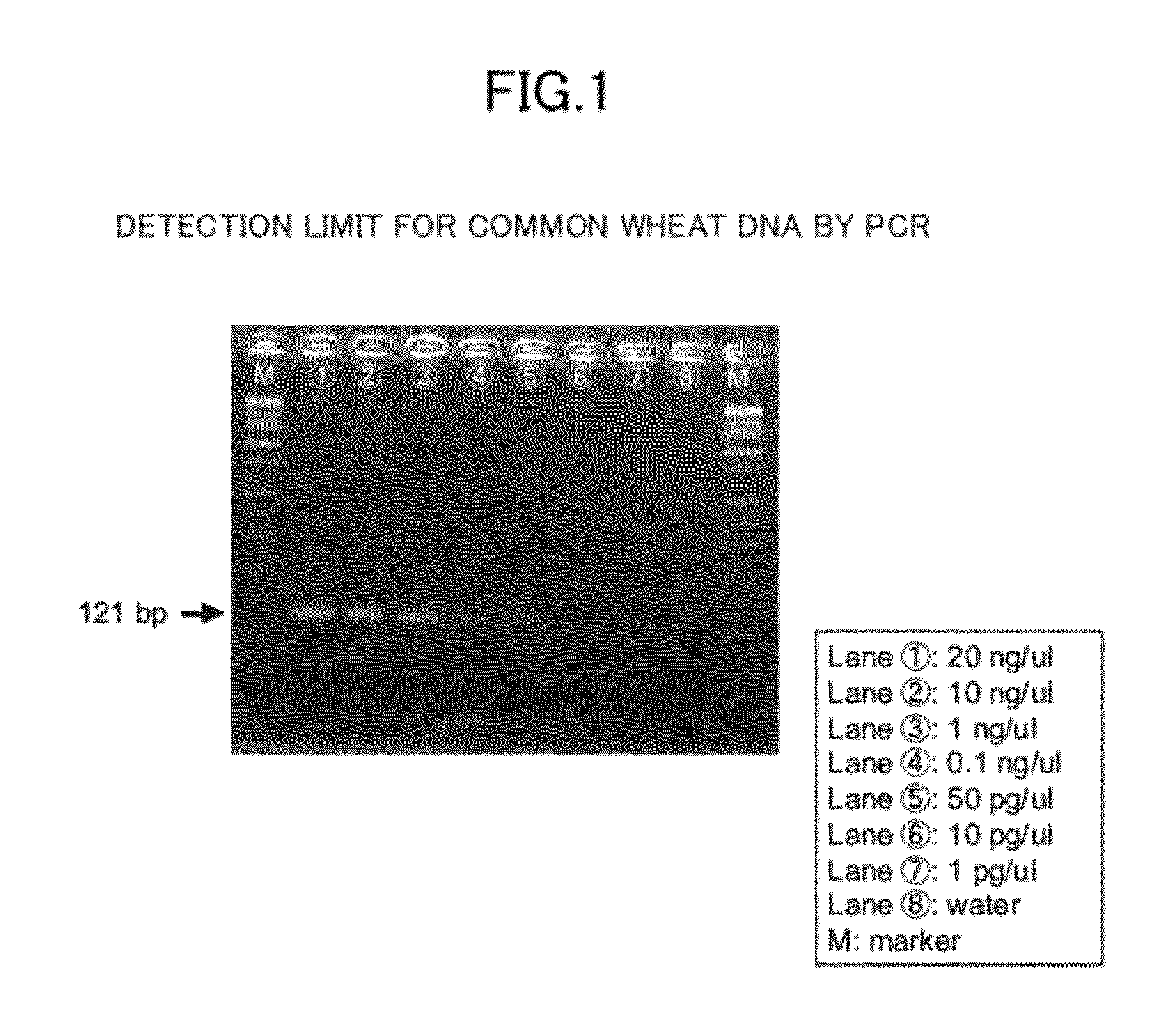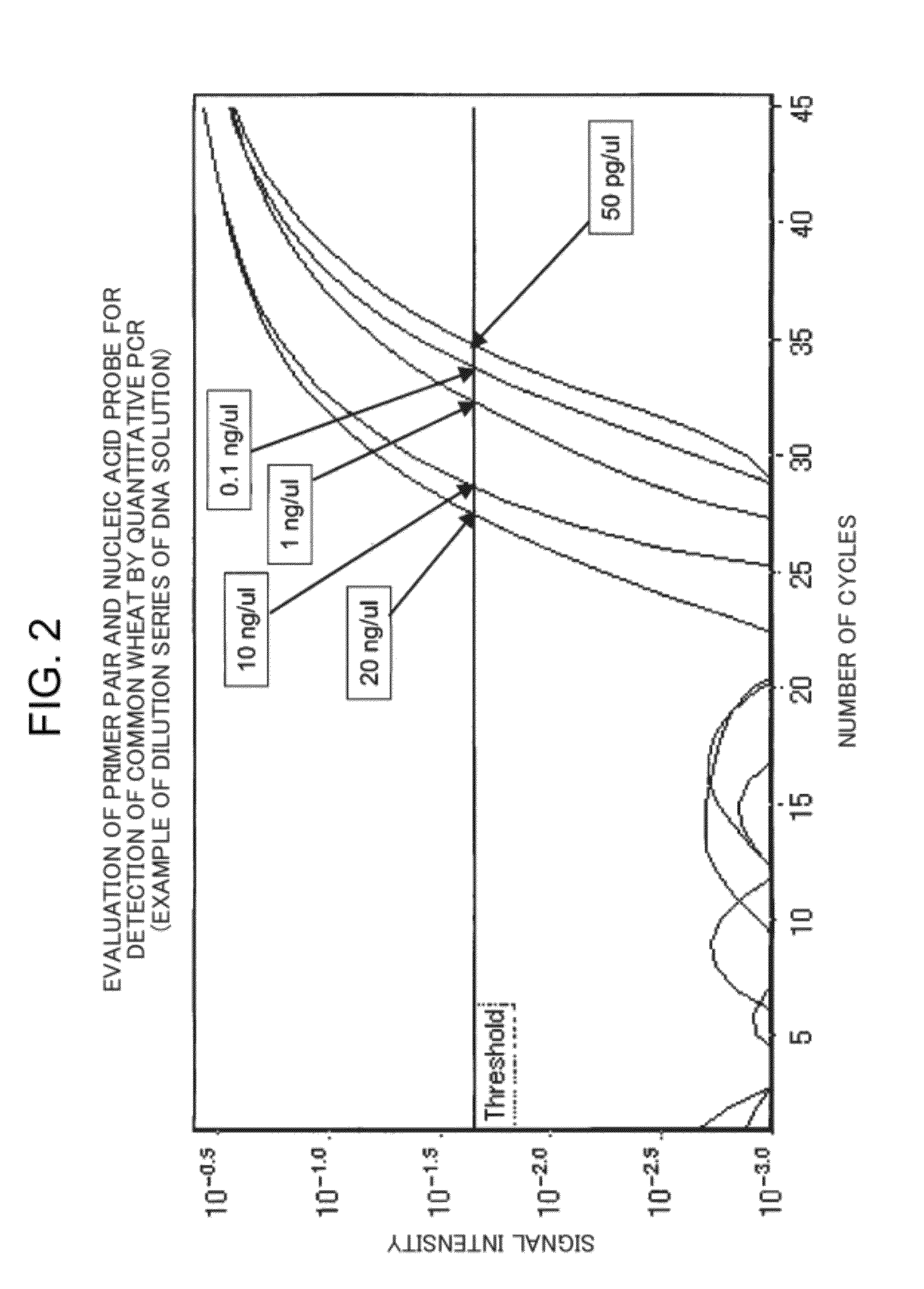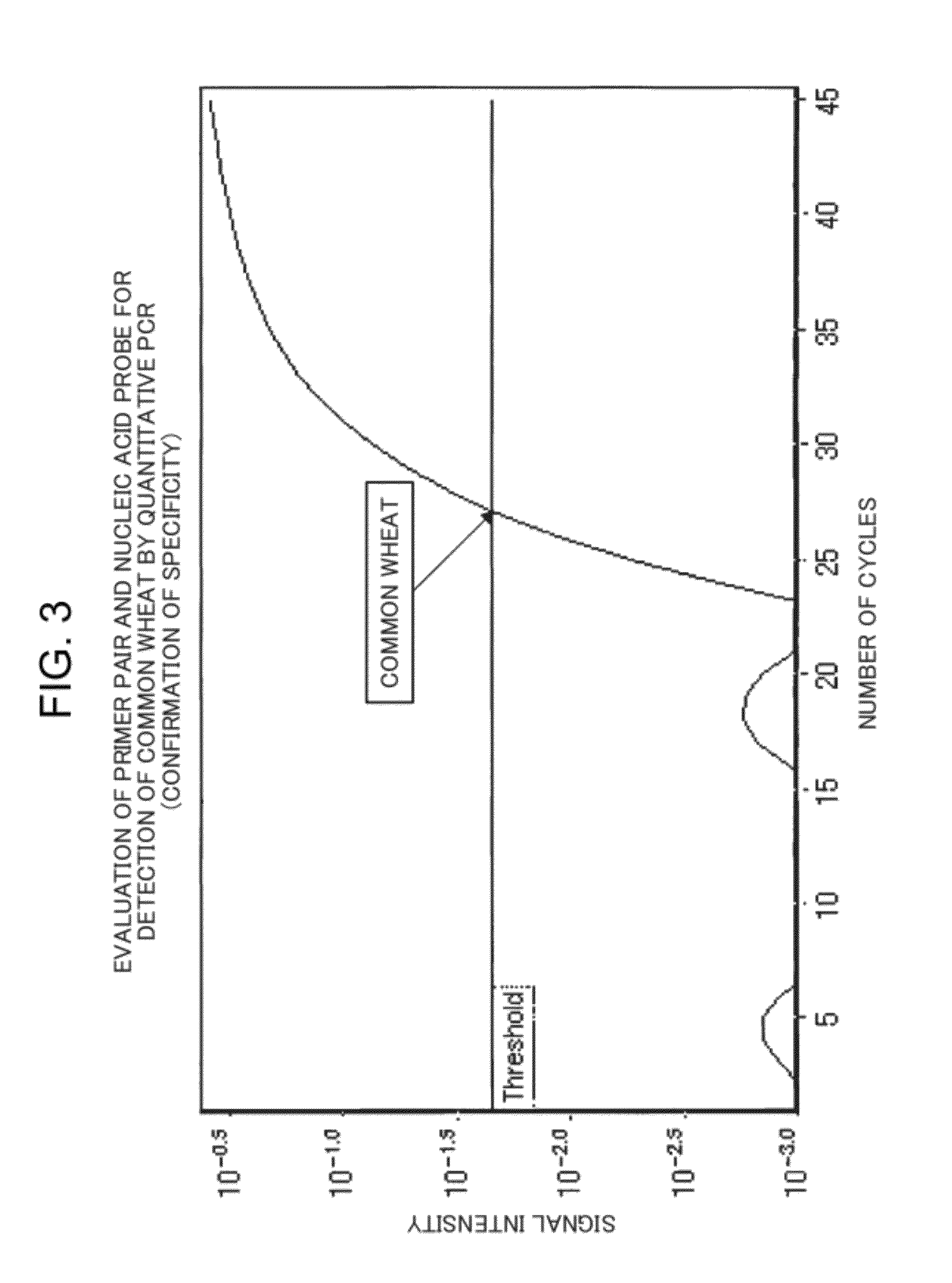Method for qualitative and quantitative detection of common wheat
a technology common wheat, which is applied in the field of qualitative and quantitative detection of common wheat, can solve the problems of difficult to distinguish between common wheat and durum wheat using protein levels, and the development of optimal testing methods is problematic, and achieves high sensitive effects
- Summary
- Abstract
- Description
- Claims
- Application Information
AI Technical Summary
Benefits of technology
Problems solved by technology
Method used
Image
Examples
examples
[0095]The present invention is more specifically described in the examples that follow, but the present invention is not limited to these examples.
1. Method of Constructing a Primer Set for Detecting Common Wheat and a Nucleic Acid Probe for Quantitation
[0096]The genomic DNA of wheat is generally composed of three types of genomes, respectively designated as A, B, and D. Common wheat is a hexaploid having the AABBDD genome, while durum wheat is a tetraploid having the AABB genome. Starch synthase II, which is the target gene for the present invention, is located on the short arm of each chromosome 7 in the wheat A, B, and D genomes; these genes are respectively abbreviated as SSII-A, SSII-B, and SSII-D (Shimbata, T. et al., Mutations in wheat starch synthase II genes and PCR-based selection of a SGP-1 null line. Theor. Appl. Genet., 2005 October; 111(6): 1072-9).
[0097]It was concluded that the objects for the present tasks could be achieved if a PCR-based common wheat detection meth...
PUM
| Property | Measurement | Unit |
|---|---|---|
| Tm | aaaaa | aaaaa |
| temperature | aaaaa | aaaaa |
| temperature | aaaaa | aaaaa |
Abstract
Description
Claims
Application Information
 Login to View More
Login to View More - R&D
- Intellectual Property
- Life Sciences
- Materials
- Tech Scout
- Unparalleled Data Quality
- Higher Quality Content
- 60% Fewer Hallucinations
Browse by: Latest US Patents, China's latest patents, Technical Efficacy Thesaurus, Application Domain, Technology Topic, Popular Technical Reports.
© 2025 PatSnap. All rights reserved.Legal|Privacy policy|Modern Slavery Act Transparency Statement|Sitemap|About US| Contact US: help@patsnap.com



